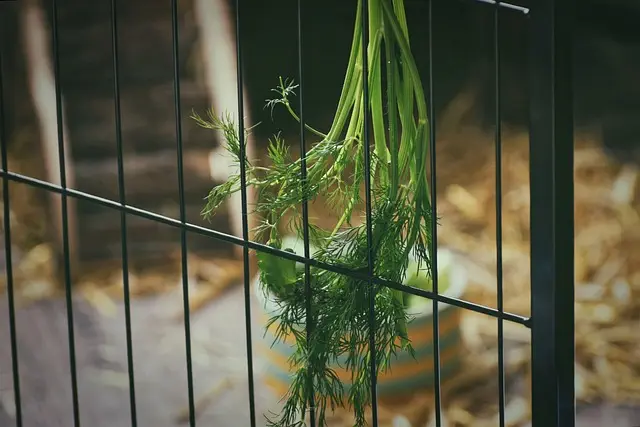Santai Kratom, a Mitragyna speciosa derivative, is gaining attention as a potential aid for managing withdrawal symptoms and supporting recovery from addiction. Its unique alkaloid composition, including mitragynine and 7-hydroxymitragynine, may engage with opioid receptors to relieve withdrawal discomfort without the risk of dependency or overdose. Preliminary studies suggest it could also assist with mood regulation and anxiety reduction, which are beneficial in recovery. However, due to its potential effects on well-being and interactions with other substances, it is crucial to use Santai Kratom under professional medical guidance. Clinical research is essential to further validate its benefits and establish safe usage protocols. Santai Kratom could be an adjunct therapy within a holistic treatment strategy for addiction recovery, but only when carefully managed by healthcare professionals specializing in addiction medicine. It's important to consider Santai Kratom as part of a personalized treatment plan, with a focus on its integration and compatibility with other recovery measures.
exploration of holistic approaches to addiction treatment reveals promising potential in Santai Kratom, a naturally occurring substance. This article delves into how Santai Kratom may serve as a valuable tool in mitigating the grip of substance abuse, effectively managing withdrawal symptoms, and facilitating sustainable recovery. We will guide readers through the nuances of incorporating Santai Kratom into treatment plans with safety and efficacy at the forefront. Join us as we uncover the multifaceted role of Santai Kratom in addiction recovery.
- Unraveling the Potential of Santai Kratom in Mitigating Substance Abuse
- Santai Kratom's Role in Managing Withdrawal Symptoms and Facilitating Recovery
- A Comprehensive Guide to Safely Incorporating Santai Kratom into Addiction Treatment Plans
Unraveling the Potential of Santai Kratom in Mitigating Substance Abuse

Studies have been conducted to explore the potential of Santai Kratom, a strain derived from the Mitragyna speciosa tree, in the realm of addiction treatment and recovery. Preliminary research suggests that certain alkaloids present in Santai Kratom may interact with opioid receptors in the brain, offering a non-addictive alternative to traditional opioids for managing withdrawal symptoms. The unique composition of this strain appears to provide comfort and relief without the risk of dependence or overdose, which is particularly promising for individuals recovering from substance abuse disorders. Additionally, Santai Kratom’s ability to modulate mood and alleviate anxiety could play a significant role in mitigating cravings and stabilizing emotional well-being during the recovery process. As scientific investigation into Santai Kratom continues, there is an increasing body of anecdotal evidence from users who report its effectiveness in aiding their journey away from substance abuse, highlighting its potential as a complementary tool in holistic treatment plans. However, it is imperative to approach any such findings with caution and to ensure that further research is conducted to substantiate these claims and establish safe dosages and protocols for its use in addiction recovery.
Santai Kratom's Role in Managing Withdrawal Symptoms and Facilitating Recovery

Santai Kratom, a strain derived from the Mitragyna speciosa plant, has garnered attention in the realm of addiction treatment and recovery, particularly for those seeking alternatives to manage withdrawal symptoms. Known for its alkaloid profile that includes mitragynine and 7-hydroxymitragynine, Santai Kratom is believed to provide relief from the discomfort associated with withdrawal, a critical aspect of the recovery process. The unique action of these compounds interacts with the opioid receptors in the brain, potentially offering a soothing effect that can help mitigate the intense physical and psychological symptoms often experienced during detoxification. This can be particularly beneficial for individuals transitioning from more potent substances, as it may provide a gentler alternative to aid in their journey towards sobriety.
Furthermore, Santai Kratom’s role in facilitating recovery extends beyond symptom management. Its potential efficacy in promoting emotional well-being and supporting mental clarity is an area of growing interest. The strain’s reported ability to elevate mood and enhance focus may contribute to a more conducive environment for those engaged in therapeutic activities and behavioral modifications that are central to long-term recovery. As with any substance, it is crucial for individuals to consult healthcare professionals before incorporating Santai Kratom into their treatment plan, ensuring that it complements other recovery strategies and does not interfere with any existing medications or conditions.
A Comprehensive Guide to Safely Incorporating Santai Kratom into Addiction Treatment Plans

Santai Kratom, a botanical extract from the Mitragyna speciosa tree, has garnered attention within addiction treatment circles for its potential therapeutic properties. As an integrative approach to recovery gains momentum, Santai Kratom may play a role in mitigating withdrawal symptoms and promoting overall well-being. It’s crucial to understand that while Santai Kratom can be a component of a holistic addiction treatment plan, its use should be approached with caution and under professional guidance. The active alkaloids found in Santai Kratom, such as mitragynine and 7-hydroxymitragynine, have been studied for their analgesic and anxiolytic effects, which can be beneficial for individuals transitioning off of more potent opioids.
When considering the incorporation of Santai Kratom into addiction treatment plans, it is essential to adhere to recommended dosages and to monitor interactions with other substances. Medical supervision is key to ensuring that this natural supplement is used safely and effectively as part of a comprehensive recovery strategy. Additionally, ongoing clinical research continues to shed light on the efficacy and safety profiles of Santai Kratom in treating various forms of addiction. As such, it’s imperative for individuals to consult with healthcare providers who specialize in addiction medicine to assess the suitability of Santai Kratom for their specific treatment needs. Properly managed, Santai Kratom may serve as a valuable adjunct therapy in the journey towards recovery from addiction.
Santai Kratom holds promise in the realm of addiction treatment and recovery, offering a potential therapeutic avenue for those grappling with substance abuse. Its role in mitigating withdrawal symptoms and facilitating the recovery process is a subject of growing interest, as evidenced by the insights shared in this article. A careful and informed approach, as outlined in the comprehensive guide to safely incorporating Santai Kratom into treatment plans, is imperative for optimal results. As research continues to unfold, Santai Kratom’s potential should be explored with caution and within the context of a multifaceted recovery strategy. With careful consideration and professional oversight, Santai Kratom may play an integral part in the arsenal against addiction.






